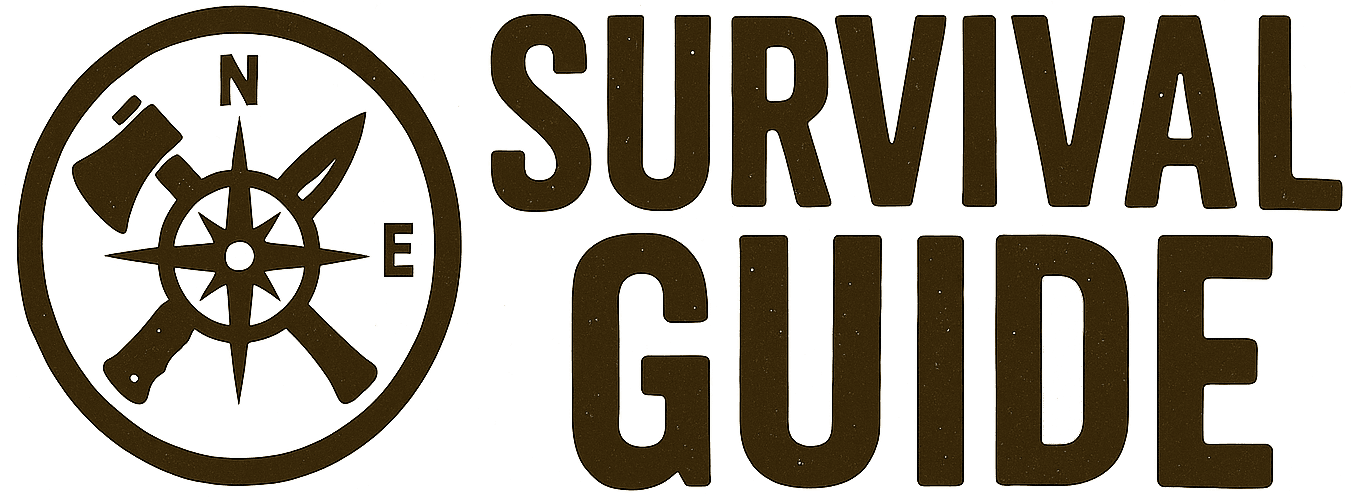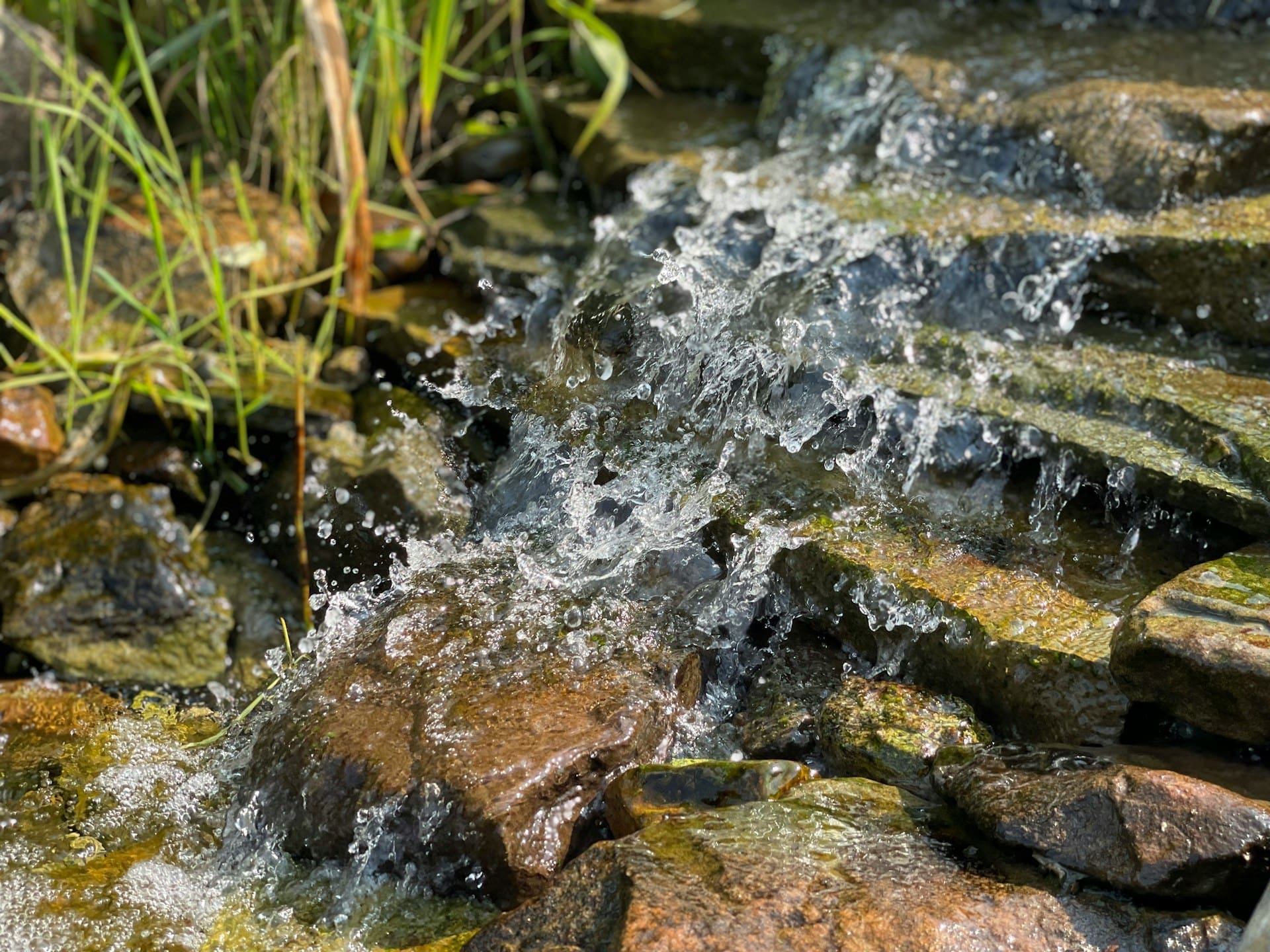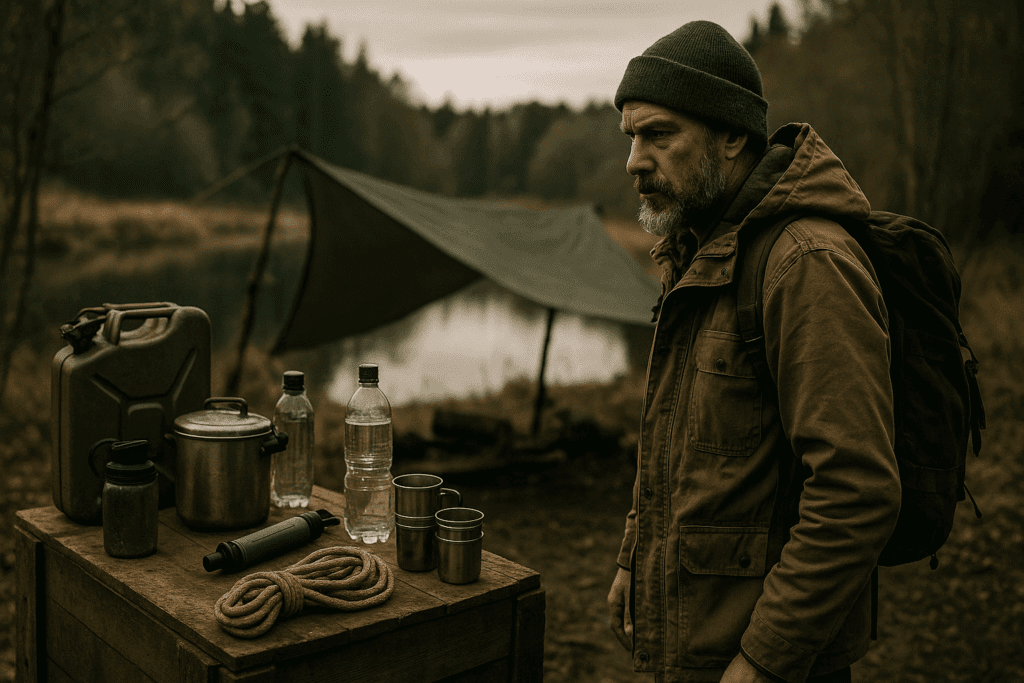When the taps stop flowing, the rain becomes more than weather—it becomes your lifeline. Every storm is a chance to fill barrels, tanks, and bottles, while everyone else stares at empty shelves. But rainwater isn’t just there for the taking. Collecting it safely and storing it properly takes foresight and a bit of know-how.
This is your guide to building a rainwater collection system that can keep you alive through blackouts, supply chain chaos, or long-term collapse.
Why Rainwater Collection Is a Survival Essential
Modern water systems rely on fragile infrastructure—power stations, treatment plants, pumping lines. One lightning strike or cyberattack and the whole chain snaps. Within 24 hours, bottled water is gone. Within three days, riots start over the last cases of cheap supermarket brands.
Rain is your insurance policy. It’s free, renewable, and with the right gear, it can keep you hydrated, clean, and cooking long after the system fails.
How Much Rainwater Can You Collect?
The amount you can harvest depends on your roof size and the rainfall in your area. The maths is simple:
- 1mm of rain on 1m² of roof = 1 litre of water.
- A 50m² roof in a moderate storm (10mm rainfall) yields 500 litres (110 gallons) in a single downpour.
Even in drier climates, consistent collection can give you hundreds of litres a month—enough to cover drinking and hygiene for a small family.
Setting Up a Rainwater Collection System
You don’t need a fancy setup to start. Here’s a step-by-step plan to get water flowing:
- Gutters and Downspouts
- Make sure they’re clean and lead to a single downspout for easy collection.
- Avoid lead-painted or rusty gutters (contaminants are deadly).
- First-Flush Diverter
- A simple device that dumps the first few litres (washing away dirt, bird droppings, and debris) before water enters your tank.
- Collection Barrel or Tank
- Food-grade barrels (200+ litres) or IBC totes (1,000 litres) are ideal.
- Place on a sturdy stand so you can gravity-feed water.
- Filter and Screen
- A fine mesh keeps out leaves, insects, and rodents.
- For drinking, add a ceramic or carbon filter before use.
- Overflow Management
- Always direct excess water away from foundations to prevent flooding.
Purifying Rainwater for Drinking
Rainwater starts clean but picks up contaminants from your roof and storage. Before drinking:
- Boil it for at least one minute (or longer at high altitudes).
- Use a portable water filter (e.g., Berkey, Katadyn, Sawyer) for bacteria and protozoa.
- Disinfect with bleach – 2 drops per litre, stir, wait 30 minutes.
- Activated carbon filters remove chemical residues and improve taste.
Store the treated water in sealed containers, away from sunlight, for long-term safety.
Rainwater Collection for Hygiene and Crops
Not all rainwater needs to be drinking-grade. Set aside non-potable tanks for:
- Flushing toilets.
- Washing clothes and dishes (with biodegradable soap).
- Watering gardens, even during drought restrictions.
Keeping your potable supply separate ensures you don’t waste filtered water on chores.
Quick Checklist: DIY Rainwater Harvesting
- Clean gutters and downspouts to avoid contamination.
- Install a first-flush diverter to discard dirty runoff.
- Use food-grade barrels or tanks with screens.
- Treat water with boiling, filtering, or bleach before drinking.
- Keep potable and non-potable supplies separate.

 water storage containers and purification tools." class="wp-image-68" srcset="https://survivalreadyguide.com/wp-content/uploads/2025/07/20250721_1031_Survivalist-Rainwater-Collection-Guide_simple_compose_01k0p51nj0f4ksz77ry4zg7m95-1024x683.png 1024w, https://survivalreadyguide.com/wp-content/uploads/2025/07/20250721_1031_Survivalist-Rainwater-Collection-Guide_simple_compose_01k0p51nj0f4ksz77ry4zg7m95-300x200.png 300w, https://survivalreadyguide.com/wp-content/uploads/2025/07/20250721_1031_Survivalist-Rainwater-Collection-Guide_simple_compose_01k0p51nj0f4ksz77ry4zg7m95-768x512.png 768w, https://survivalreadyguide.com/wp-content/uploads/2025/07/20250721_1031_Survivalist-Rainwater-Collection-Guide_simple_compose_01k0p51nj0f4ksz77ry4zg7m95.png 1536w" sizes="(max-width: 1024px) 100vw, 1024px" />
water storage containers and purification tools." class="wp-image-68" srcset="https://survivalreadyguide.com/wp-content/uploads/2025/07/20250721_1031_Survivalist-Rainwater-Collection-Guide_simple_compose_01k0p51nj0f4ksz77ry4zg7m95-1024x683.png 1024w, https://survivalreadyguide.com/wp-content/uploads/2025/07/20250721_1031_Survivalist-Rainwater-Collection-Guide_simple_compose_01k0p51nj0f4ksz77ry4zg7m95-300x200.png 300w, https://survivalreadyguide.com/wp-content/uploads/2025/07/20250721_1031_Survivalist-Rainwater-Collection-Guide_simple_compose_01k0p51nj0f4ksz77ry4zg7m95-768x512.png 768w, https://survivalreadyguide.com/wp-content/uploads/2025/07/20250721_1031_Survivalist-Rainwater-Collection-Guide_simple_compose_01k0p51nj0f4ksz77ry4zg7m95.png 1536w" sizes="(max-width: 1024px) 100vw, 1024px" />Final Warning
Water is life, and in a prolonged grid-down event, every drop counts. Those who start now—before the taps run dry—will watch the storms roll in with confidence, while their neighbours pray for bottled water deliveries that never come.
Set up your rainwater collection system today. When the next crisis hits, you’ll thank yourself every time you hear the sound of rain hitting your roof.







